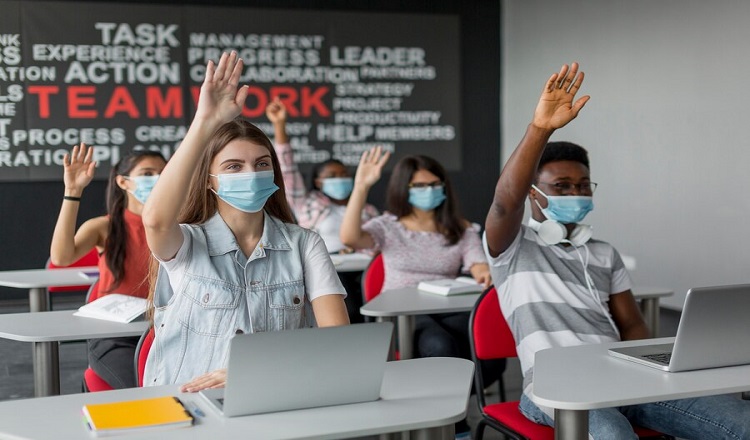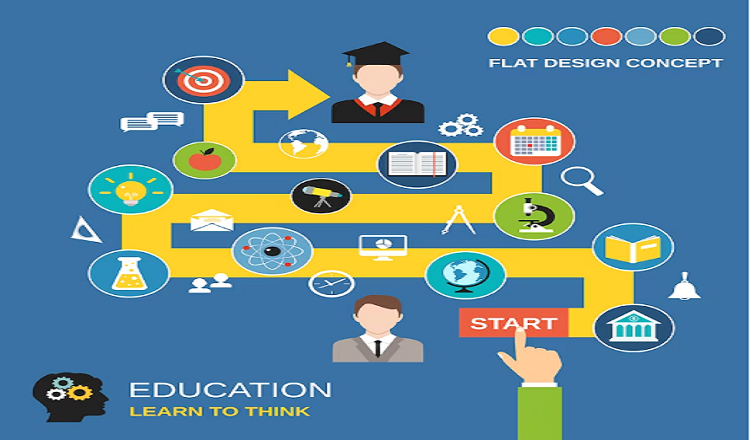Without a doubt, the COVID-19 epidemic has upended the world, bringing about disruptions and upheavals that have impacted every facet of life as we know it. The pandemic’s effects on education have been among its most serious ones. Students and teachers alike were driven into the world of remote learning when schools across the United States were forced to close their doors. Even while some schools have reopened for face-to-face instruction, the pandemic’s effects on education are far from done.
In this blog, we’ll examine how the COVID-19 pandemic has affected American schools. We’ll examine the many ways the pandemic has impacted education, from school closings and remote learning to the digital gap and mental health. This subject warrants discussion since it will have a significant impact on how American education will develop in the future. Understanding the difficulties we confront and the adjustments we must make to make sure that all students have access to high-quality education is vital as we navigate this new normal. So take a coffee, sit back, and let’s explore how the COVID-19 pandemic has affected American education.
Remote learning and school closures
Millions of children and teachers struggled to adjust to remote learning as a result of the pandemic, which forced schools to close across the USA. The abrupt switch to virtual classrooms had a significant impact on education, posing many difficulties for both students and teachers. Many students found it challenging to succeed in remote learning because they had restricted access to technology and the internet, had little opportunity to engage with teachers and peers, and had trouble keeping motivated. Teachers, on the other hand, had the difficult burden of modifying their teaching strategies to fit the virtual classroom, coping with a wide variety of student demands, and managing the additional stress of the epidemic.
Despite these difficulties, remote learning turned out to be a successful method of carrying on with education during the pandemic. Students were able to continue their education despite the shutdown since technology made it easier to communicate and access educational resources. However, there were a lot of differences in the efficiency of remote learning based on the students’ ages, socioeconomic level, and access to technology. The epidemic caused school closures for over 50 million pupils in the USA, and the digital gap made it difficult for many of them to access remote learning, according to statistics.
Internet and technology access
The success of remote learning during the epidemic was largely dependent on having access to technology and the internet. Students without access to these services were unable to participate in online classes or finish assignments while schools were closed. Students from low-income families and marginalised communities were disproportionately affected by this digital divide, making it more difficult for them to complete their education. Rural areas, where high-speed internet connectivity is frequently scarce, were significantly impacted by the digital divide. According to statistics, almost 12 million pupils in the USA did not have access to the internet at home, and a further 16 million did not have access to computers or tablets. This emphasises how vital it is to take steps to close the digital divide and guarantee that all students have access to a quality education.
Socialisation and mental health
The socialisation and emotional health of pupils were significantly impacted by remote learning. Due to the closure of schools and social isolation policies, students were cut off from their peers and lacked the social interaction that is vital for healthy development. Students’ levels of anxiety and sadness grew as a result of the stress of the pandemic, the lack of face-to-face engagement with peers and professors, and other factors. Additionally, the absence of regularity and structure in schools added to pupils’ general sense of confusion and uncertainty. According to statistics, the epidemic has caused a marked rise in mental health problems among American students, with one study finding that 7 out of 10 teenagers have dealt with these problems as a result of the pandemic. This demonstrates the pressing need to prioritise students’ wellbeing in these trying times and attend to their mental health needs.
Education Inequalities
The COVID-19 pandemic has highlighted and made existing educational gaps in the USA worse. Due to their frequent lack of technology and internet access, congested living conditions, and working parents, students from marginalised areas were disproportionately impacted by school closures and distant learning. Due to increasing barriers to remote learning and support for underprivileged pupils, the achievement gap between students from low-income households and their more affluent counterparts has grown as a result of the epidemic. According to statistics, low-income, black, and Hispanic kids are more likely to lag behind in their academics among students from marginalised areas. This emphasises how critical it is to overcome systemic educational disparities and guarantee that all pupils have access to high-quality instruction.
Teaching and Learning Changes
In the USA, teaching and learning have had to undergo considerable modifications as a result of the COVID-19 pandemic. Teachers had to swiftly adjust to remote teaching after schools were closed, using digital technologies to provide courses and interact electronically with pupils. Due to the pandemic, educators are experimenting with new technology and teaching strategies to make learning more dynamic and interesting for pupils. Utilising video conferencing, online learning platforms, and gamifying learning are a few instances of these advances. Schools and teachers had to adapt their methods of teaching to be more adaptable in order to allow for more individualised instruction and meet the needs of each student. Despite being difficult, the epidemic has also provided chances for improvement and reform in education.
Education’s Future
The COVID-19 epidemic has significantly impacted American education and is expected to bring about long-lasting changes in the future. Remote learning has required the adaptation of schools and instructors, presenting both new opportunities and difficulties. Due to the epidemic, it is now more important than ever to have access to technology and the internet, as well as to have flexible and individualised learning opportunities. A hybrid approach to education is most likely to be used in the future, mixing conventional in-person instruction with online and remote learning possibilities. Schools and teachers must invest in digital infrastructure and receive training in online teaching techniques in order to be ready for upcoming problems. Additionally, schools must place a high priority on students’ mental health and wellbeing and make sure they have access to the help they require when facing difficult situations.
Conclusion
As a result of school closures and remote learning, the COVID-19 epidemic has had a tremendous impact on education in the USA and presented substantial difficulties for kids, teachers, and parents. With marginalised areas being disproportionately impacted by the crisis, the pandemic has brought attention to already-present educational gaps. Additionally, the epidemic has pushed adjustments in education, creating new chances for personalised learning as well as advances in teaching and learning. A hybrid method that mixes in-person learning with remote possibilities is expected to become the standard as a result of the pandemic, which will likely result in long-lasting changes in education.
It is essential to keep talking about how COVID-19 has affected American education in order to increase awareness of the difficulties that kids, teachers, and parents have endured as a result of the pandemic. Additionally, it is crucial to address the current educational disparities and guarantee that all kids, regardless of their socioeconomic background, have access to high-quality education.
Prioritising students’ mental health and wellbeing as we navigate these trying times is essential, as is giving them the help they need to achieve. Let’s work together to develop a more egalitarian and durable education system that can withstand upcoming crises and guarantee that every student has the chance to realise their full potential.
Read More You May Like:











